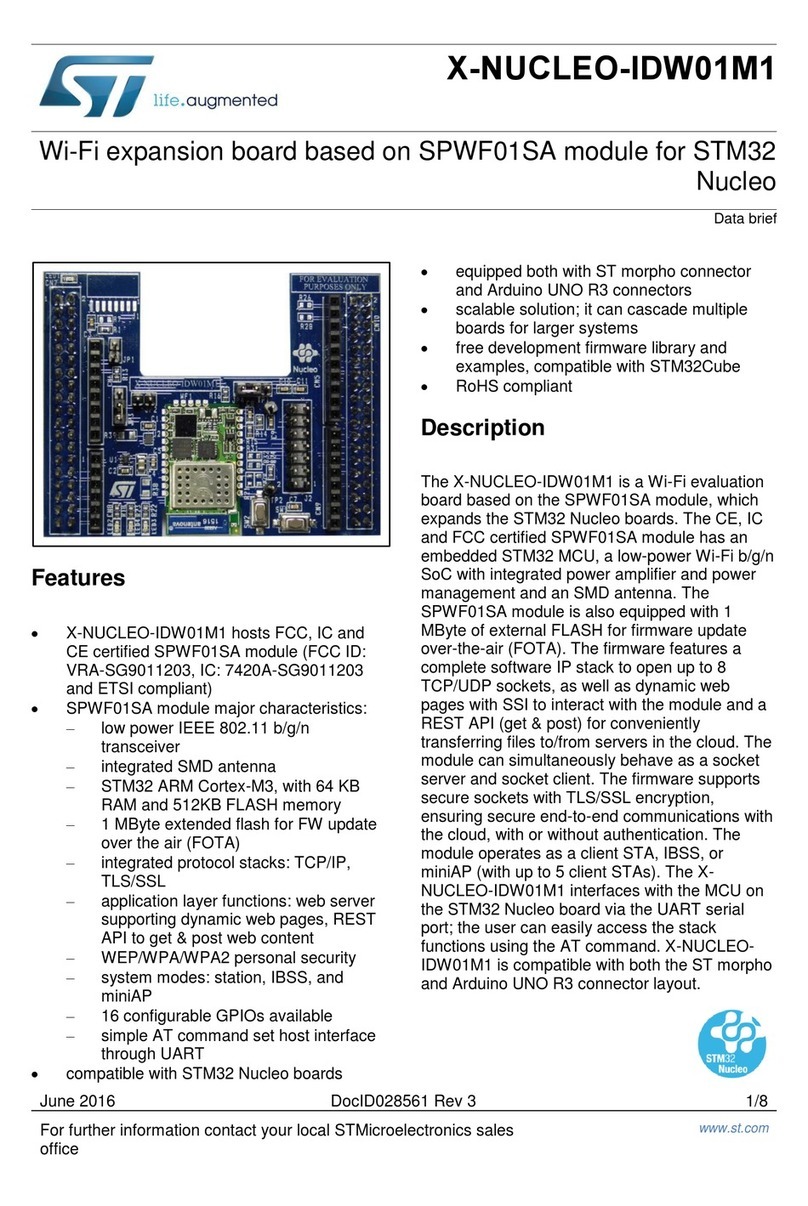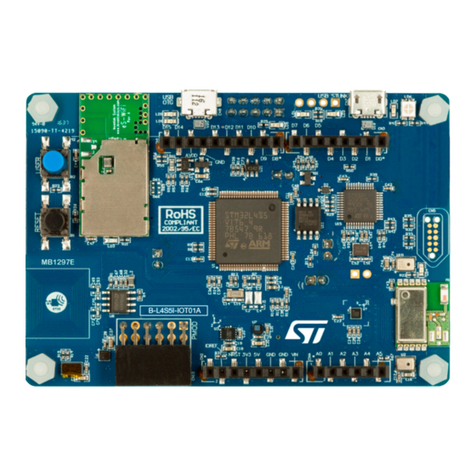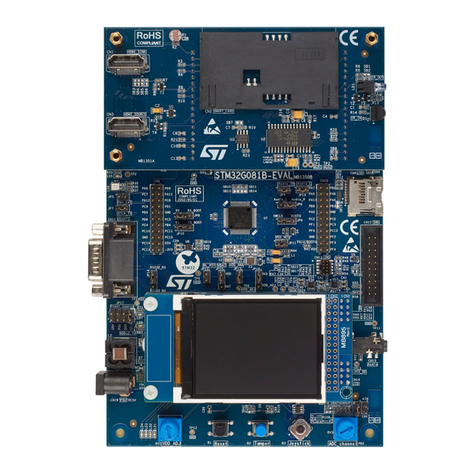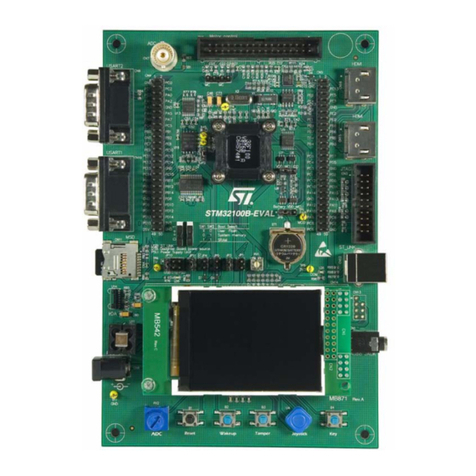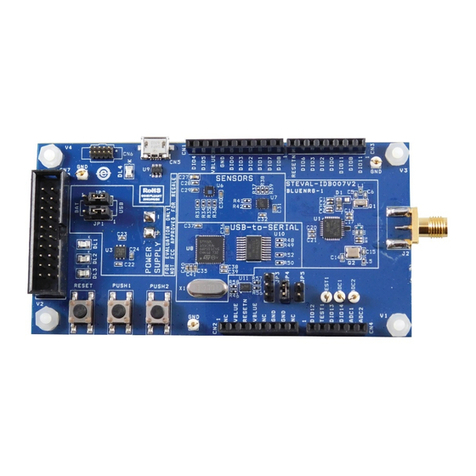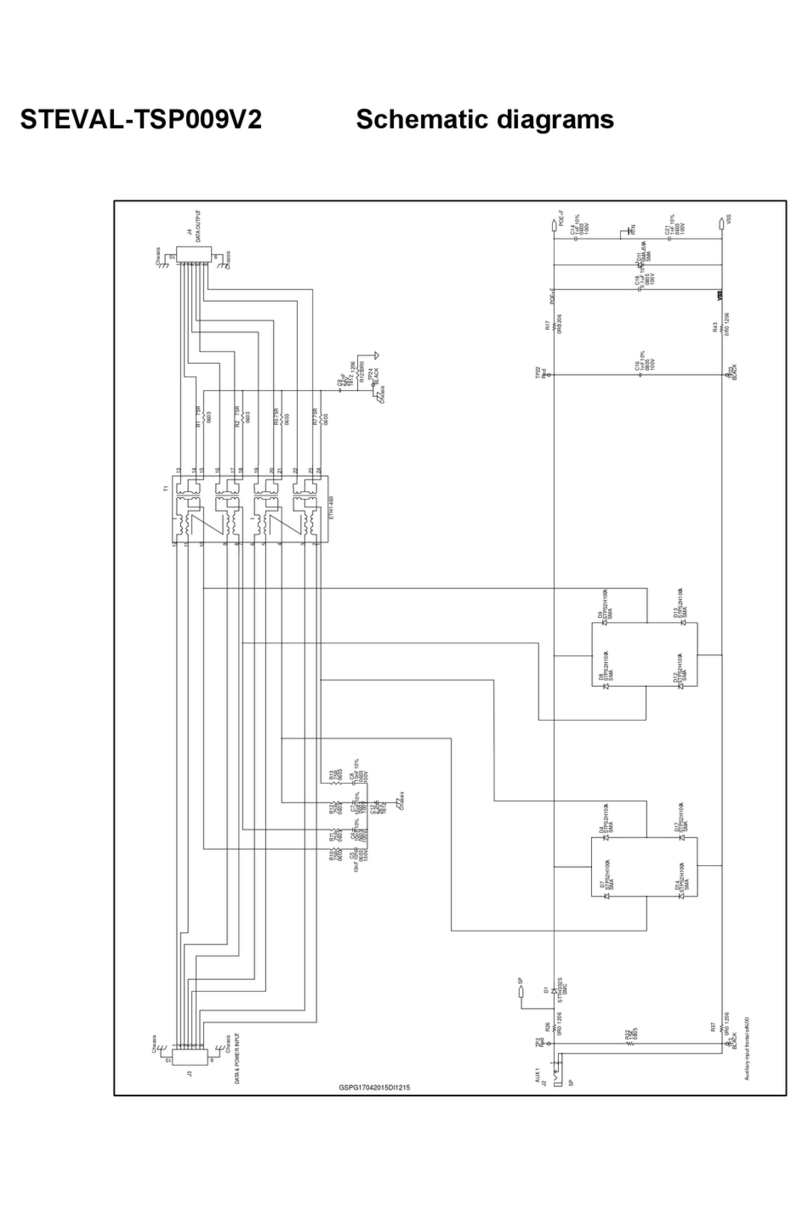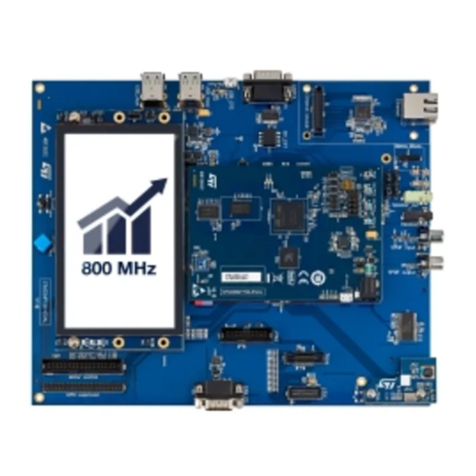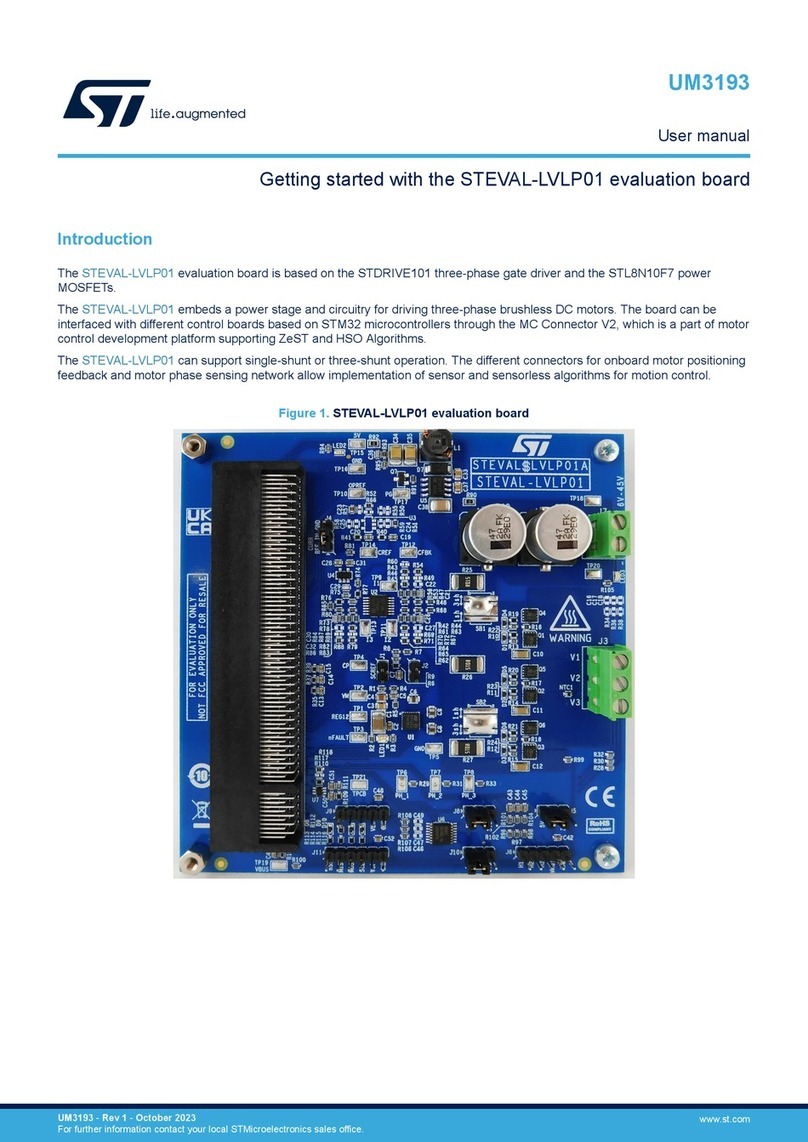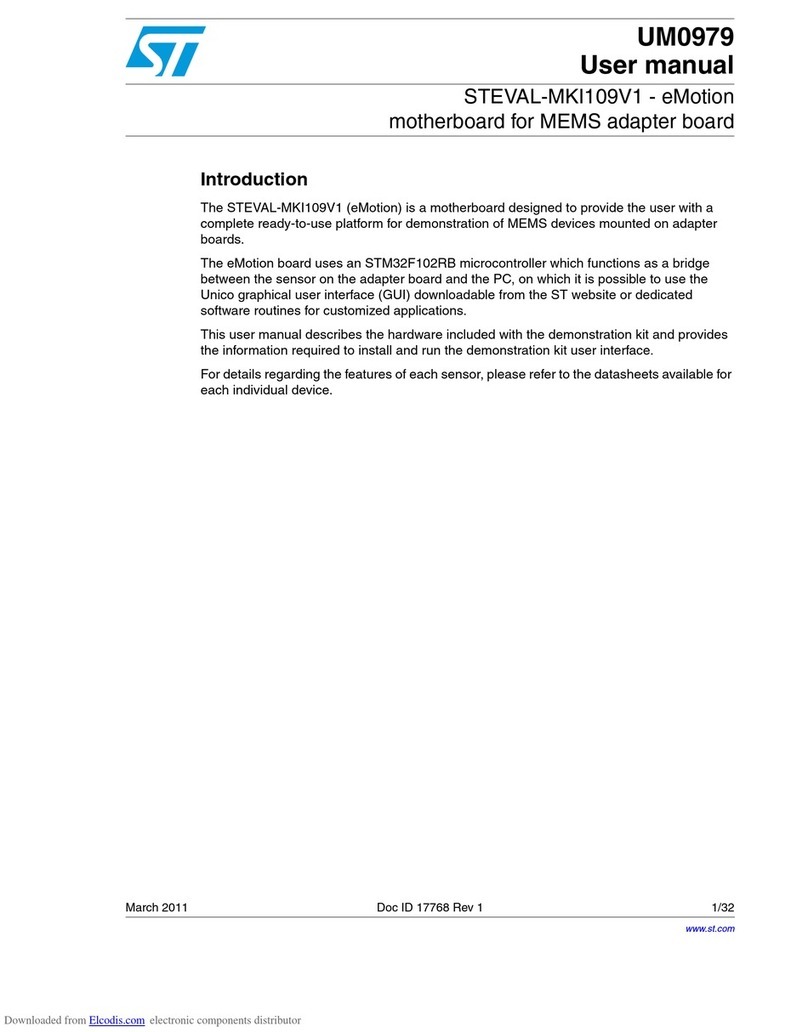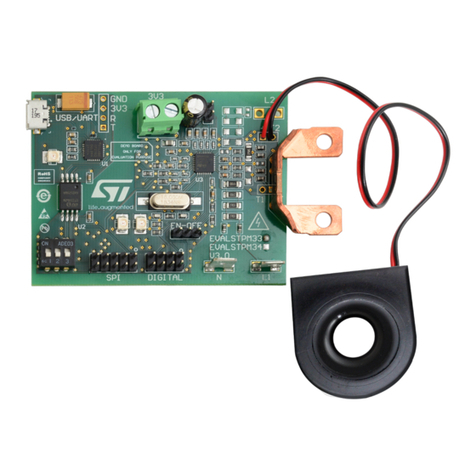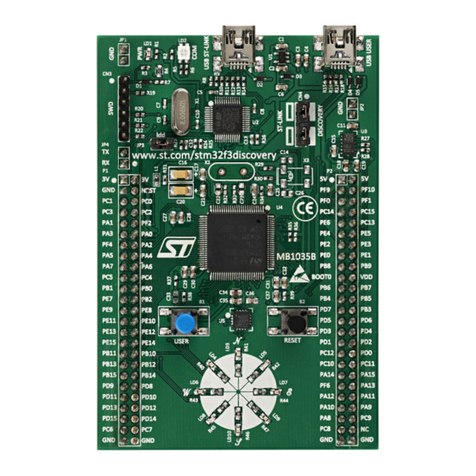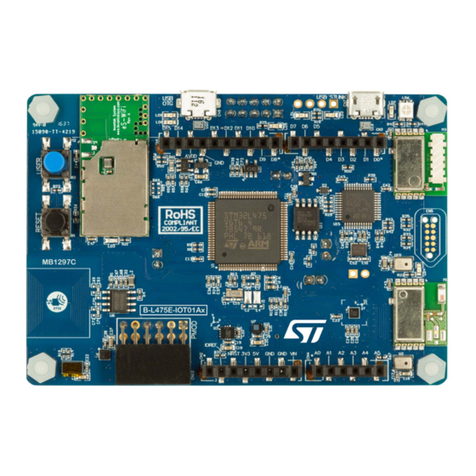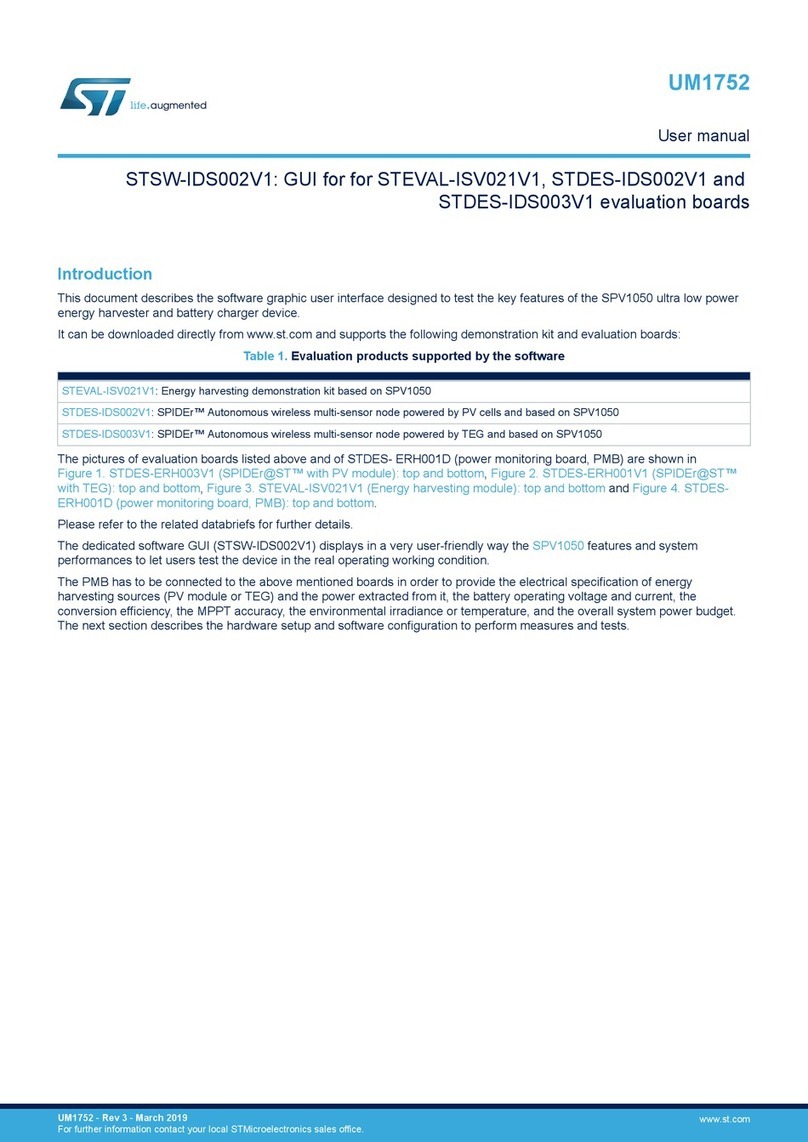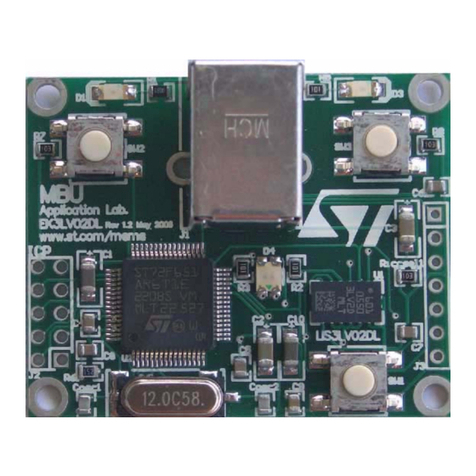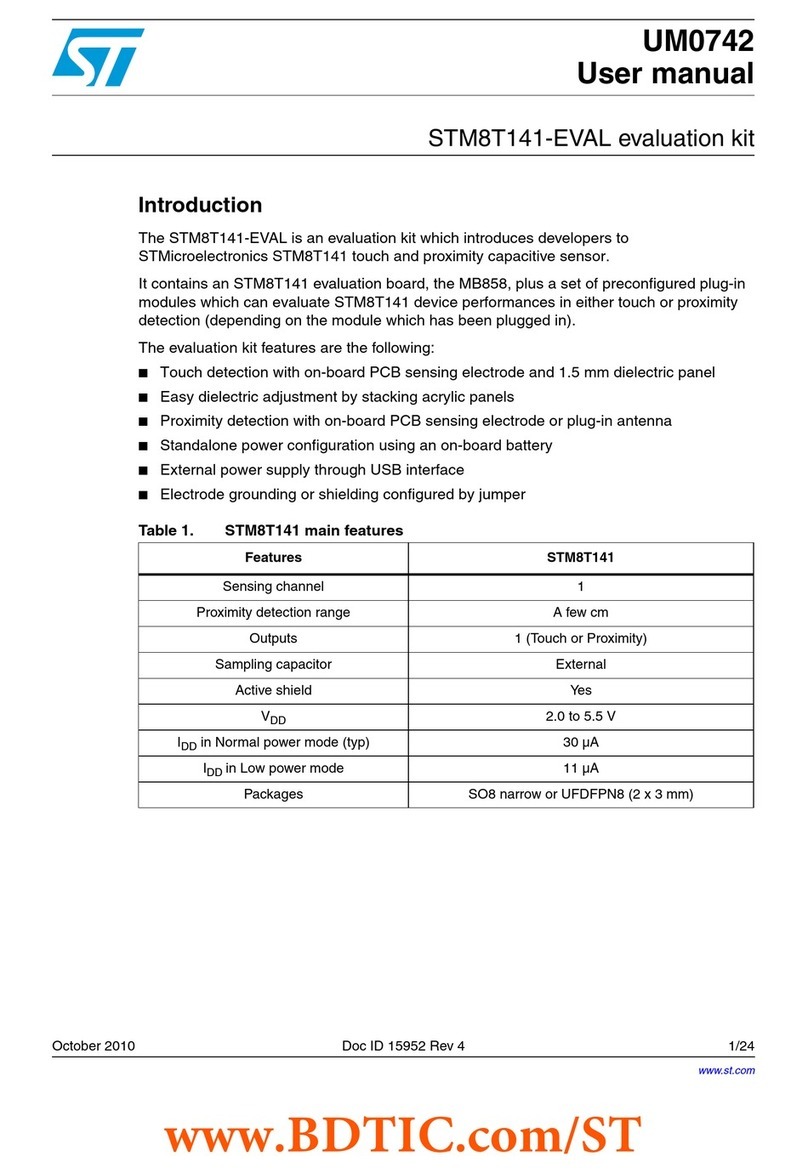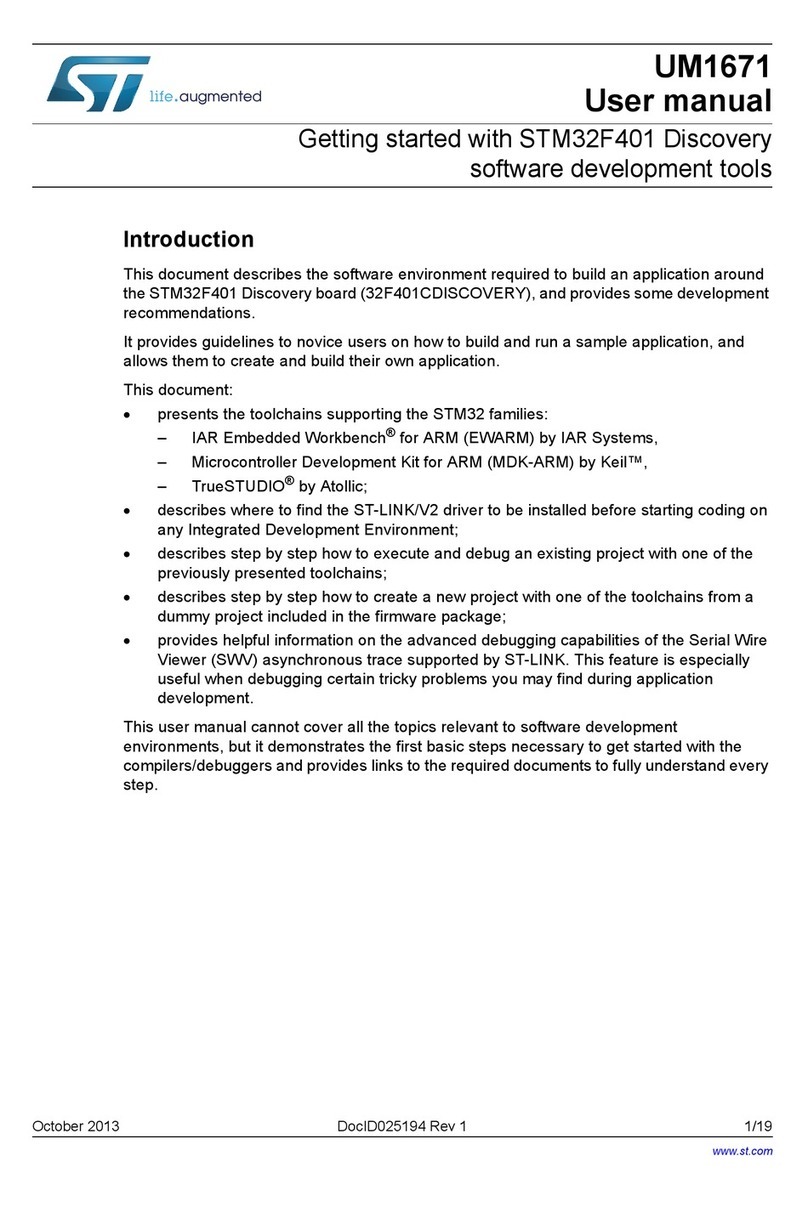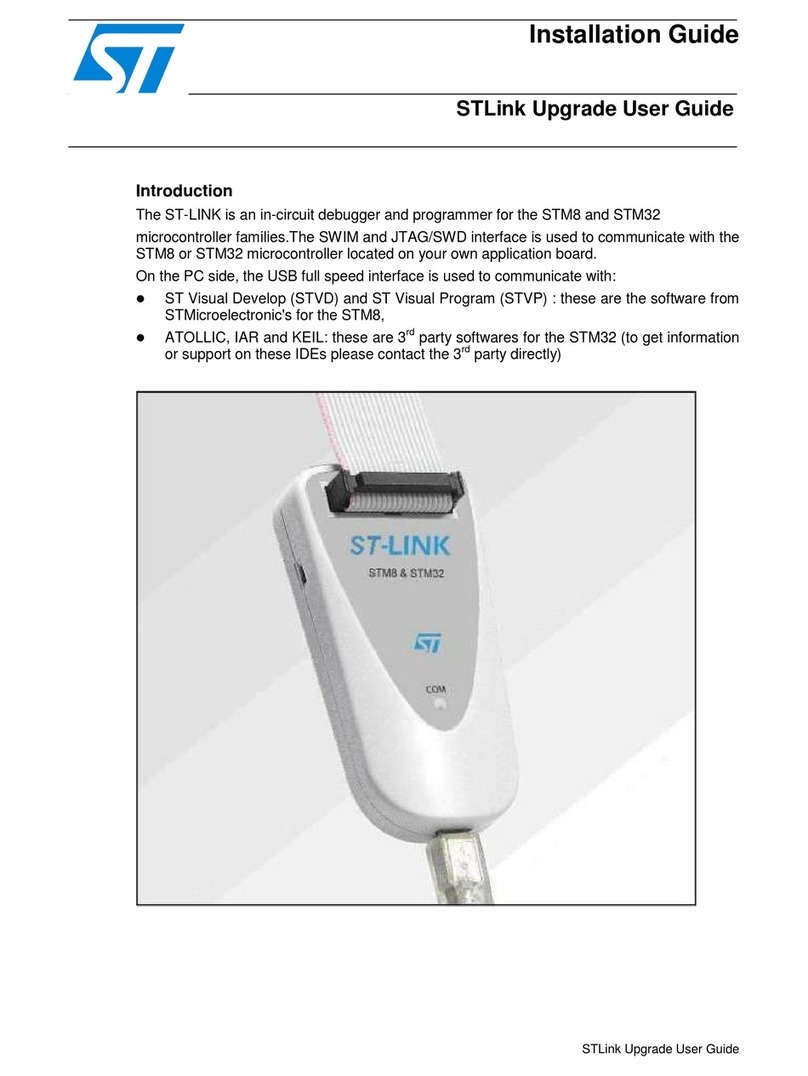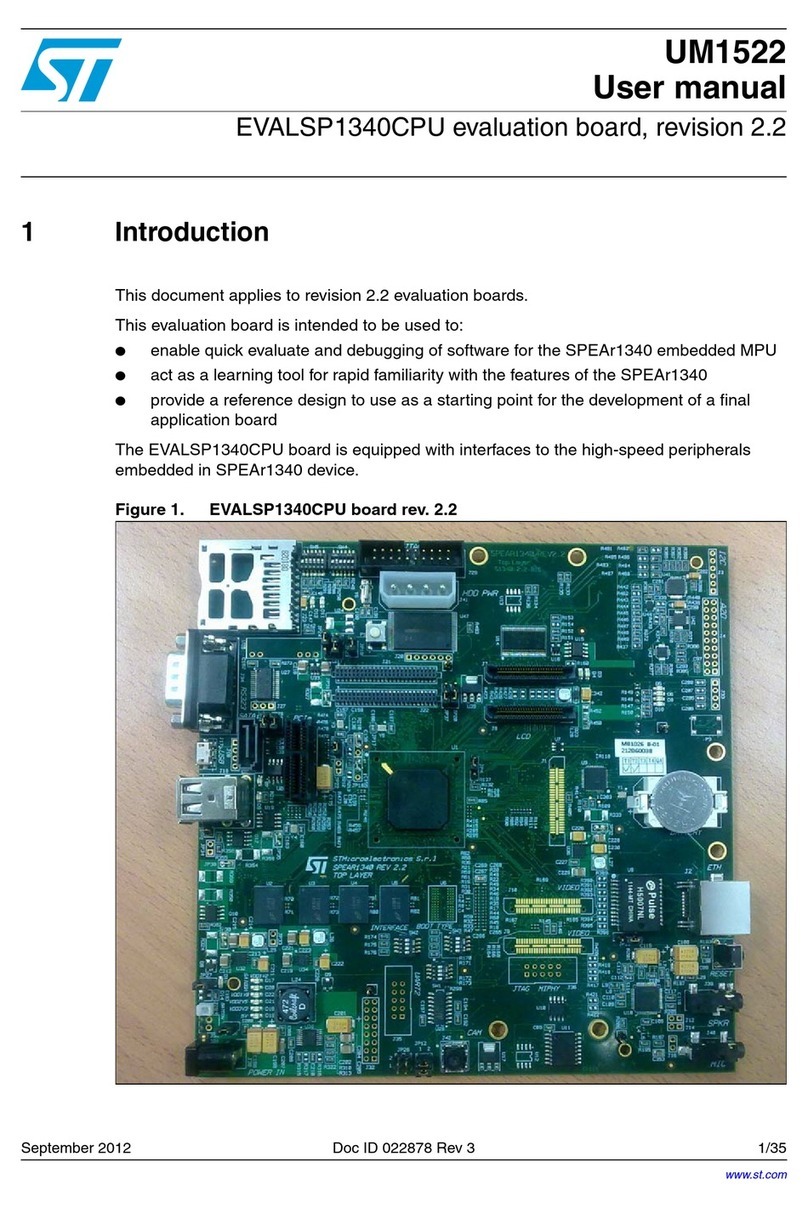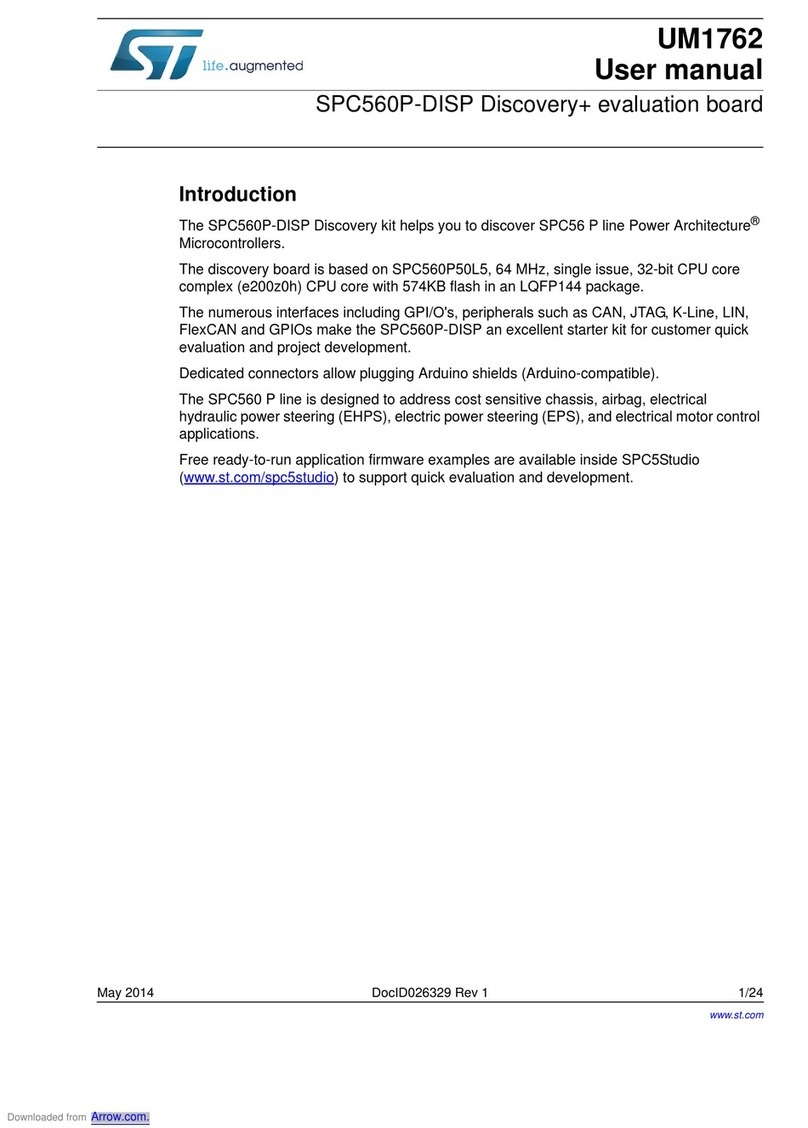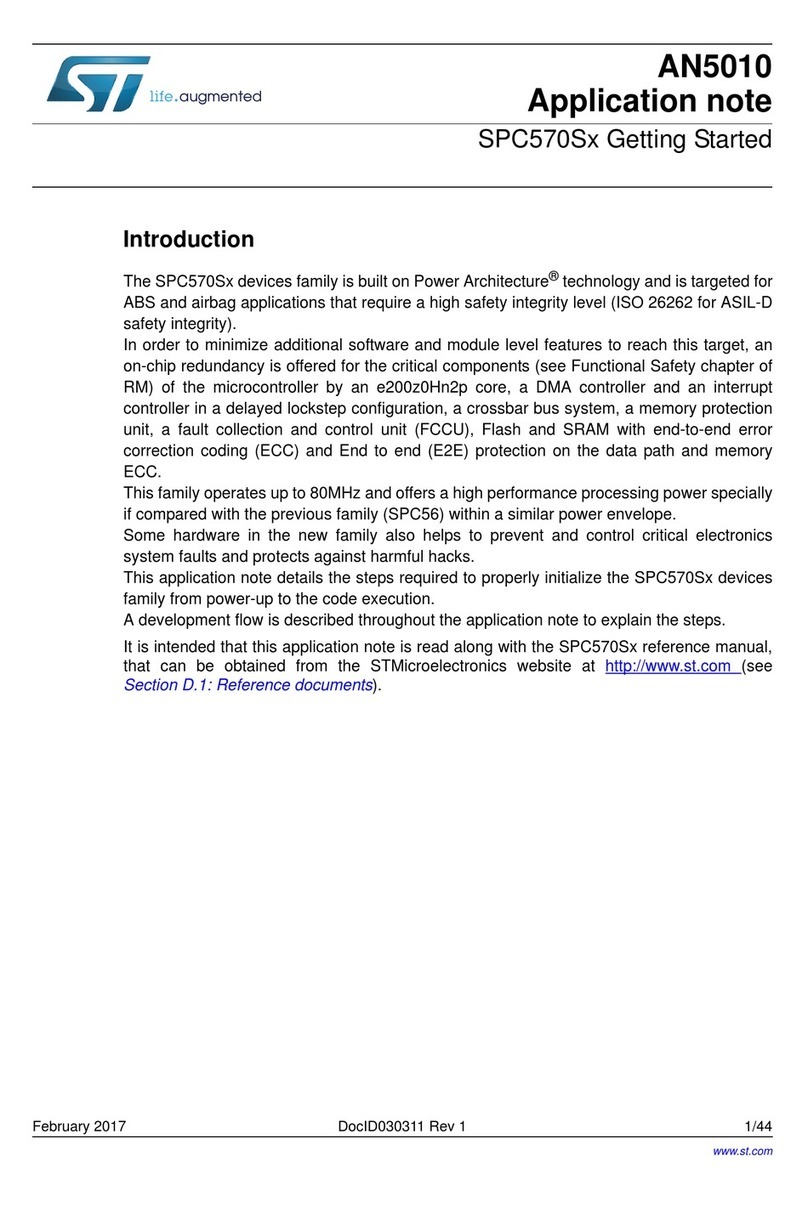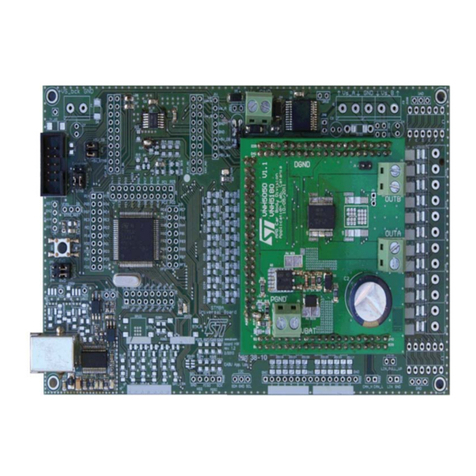
5Hardware description
5.1 RF circuit
The core component of the RF circuit is the ST25RU3993 chip. It receives digital base-band transmit data and
commands from the MCU via the SPI interface. ST25RU3993 frames this transmit data accordingly and
automatically encodes it into PIE symbols. Based on the PIE encoded symbols ST25RU3993 creates a sinusoidal
shaped modulation signal. The modulation signal can either be ASK or PR-ASK. ST25RU3993 synthesizes an RF
carrier frequency with a VCO / integer-n phase locked loop (PLL). The frequency reference for the PLL can either
be a 20 MHz crystal oscillator or a temperature compensated crystal oscillator (TCXO). The ST25RU3993-EVAL
board includes both options. The default configuration is the TCXO with a clipped sine wave output wave form
and an amplitude of 0.8 Vpp. With a minor modification it is possible to connect the existing crystal to
ST25RU3993 instead.
Table 1. TCXO/Crystal Configuration
Default configuration Alternate configuration (user configuration)
TCXO connected to ST25RU3993 Crystal connected to ST25RU3993
R54 and R55 not populated C51 removed and populate R54 and R55
The output of the internal PLL- charge pump is connected to LF_CEXT (pin 45) at which the external part of the
loop filter is placed in close proximity. An additional low pass filter stage is integrated in ST25RU3993 and is part
of the loop filter circuit. The loop filter output is the control voltage of the internal VCO. The carrier frequency is
modulated by the ASK or PR-ASK shaped modulation signal.
ST25RU3993 has two differential output port pairs:
• The 0-dBm (linear) output
• The internal power amplifier output
Depending on which differential output port pair is activated the modulated carrier frequency will be amplified
accordingly.
The 0-dBm output is used for the long-range configuration of the ST25RU3993-EVAL reader. The 0-dBm output
with its differential output pin pairs RFONX (23) and RFOPX (24) is connected to a 2:1 Balun at which point the
transmit signal is transformed from a 100 differential to a 50 Ω single-ended signal. The output stage of the 0-dBm
output is supplied by the VDD_B voltage that is generated and regulated by ST25RU3993. L3 and L4 act as a RF
choke, C57 and C58 as bypass capacitors and C65 and C54 as DC blocking capacitors. The signal then
proceeds to the external power amplifier to generate a high power output signal with approximately 31 dBm in
default configuration of ST25RU3993-EVAL board.
The internal power amplifier is used for the short-range configuration of the ST25RU3993-EVAL reader. The
output pins for the internal power amplifier are PAOUT_N (16, 17) and PAOUT_P (20, 21). A matching network
UM2353
Hardware description
UM2353 - Rev 2 page 7/48
